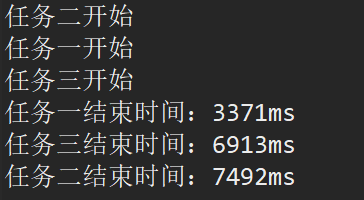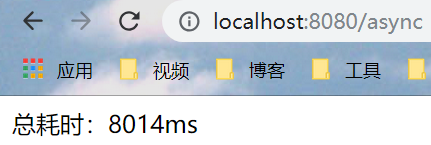十六:自定义拦截器
参考文档
16.1 编写拦截器类
extends WebMvcConfigurerAdapter 并重写WebMvcConfigurerAdapter,如下:

1 package com.wu.interceptor; 2 3 import javax.servlet.http.HttpServletRequest; 4 import javax.servlet.http.HttpServletResponse; 5 6 import org.springframework.context.annotation.Configuration; 7 import org.springframework.web.servlet.HandlerInterceptor; 8 import org.springframework.web.servlet.ModelAndView; 9 import org.springframework.web.servlet.config.annotation.InterceptorRegistry; 10 import org.springframework.web.servlet.config.annotation.WebMvcConfigurerAdapter; 11 12 @Configuration//声明这是一个配置 13 public class MyInterceptor extends WebMvcConfigurerAdapter { 14 15 @Override 16 public void addInterceptors(InterceptorRegistry registry) { 17 //以内部类的创建拦截器 18 HandlerInterceptor interceptor=new HandlerInterceptor() { 19 20 @Override 21 public boolean preHandle(HttpServletRequest arg0, HttpServletResponse arg1, Object arg2) throws Exception { 22 System.out.println("自定义拦截器"); 23 //返回true时放行 24 return true; 25 } 26 27 @Override 28 public void postHandle(HttpServletRequest arg0, HttpServletResponse arg1, Object arg2, ModelAndView arg3) 29 throws Exception { 30 } 31 32 @Override 33 public void afterCompletion(HttpServletRequest arg0, HttpServletResponse arg1, Object arg2, Exception arg3) 34 throws Exception { 35 } 36 }; 37 //注册拦截器并设置拦截路径 38 registry.addInterceptor(interceptor).addPathPatterns("/**"); 39 } 40 41 }
注意:需要在拦截器类上添加 @Configuration,声明这是一个配置类,还需要在启动类中需要扫描到该类,如以下所示:

1 package com.wu.app; 2 3 import org.springframework.boot.SpringApplication; 4 import org.springframework.boot.autoconfigure.SpringBootApplication; 5 6 //@EnableAutoConfiguration 7 //@ComponentScan("com.wu.controller")//默认扫描的是当前包和当前包的子包 8 @SpringBootApplication(scanBasePackages={"com.wu.controller","com.wu.interceptor"}) 9 public class SpringApplications { 10 //程序启动入口 11 public static void main(String []args){ 12 SpringApplication.run(SpringApplications.class, args); 13 } 14 }
16.2 测试定义的拦截器是否生效
编写Controller类简单测试刚刚定义的拦截器是否有效,如下:

1 package com.wu.controller; 2 3 import org.springframework.web.bind.annotation.RequestMapping; 4 import org.springframework.web.bind.annotation.RestController; 5 6 @RestController 7 public class TestController { 8 @RequestMapping("/test") 9 public String test(){ 10 System.out.println("这是一个测试"); 11 return "test"; 12 } 13 }
在控制台中可以看到输出顺序:

十七:全局异常处理器的简单实现
参考文档
17.1 编写异常处理器类

1 package com.wu.controller; 2 3 import java.util.HashMap; 4 import java.util.Map; 5 6 import org.springframework.web.bind.annotation.ExceptionHandler; 7 import org.springframework.web.bind.annotation.RestControllerAdvice; 8 9 @RestControllerAdvice 10 public class GlobalExceptionHandler { 11 @ExceptionHandler(Exception.class) 12 public Map<String,Object> handleException(Exception e){ 13 Map<String,Object> map=new HashMap<>(); 14 map.put("errorCode","500"); 15 map.put("Msg",e.toString()); 16 return map; 17 } 18 }
17.2 编写测试类

1 package com.wu.controller; 2 3 import org.springframework.web.bind.annotation.RequestMapping; 4 import org.springframework.web.bind.annotation.RestController; 5 6 @RestController 7 public class TestController { 8 @RequestMapping("/test") 9 public String test(){ 10 int a=1/0; 11 return "test"; 12 } 13 }
测试结果:
![]()
十八:SpringBoot中的异步调用
18.1 相关知识
参考文档:Java中的Future, Future接口
Future接口的作用:
- 代表异步计算的执行结果;
- 用于可取消的task;(比使用interrupt实现取消要方便 )
18.2在Service层中编写异步测试类

1 package com.wu.service; 2 3 import java.util.concurrent.Future; 4 5 public interface AsyncService { 6 Future<String> doTask1()throws Exception; 7 Future<String> doTask2()throws Exception; 8 Future<String> doTask3()throws Exception; 9 }

1 package com.wu.service; 2 3 import java.util.Random; 4 import java.util.concurrent.Future; 5 6 import org.springframework.scheduling.annotation.Async; 7 import org.springframework.scheduling.annotation.AsyncResult; 8 import org.springframework.stereotype.Service; 9 @Service 10 public class AsyncServiceImp implements AsyncService { 11 @Async 12 @Override 13 public Future<String> doTask1() throws Exception { 14 System.out.println("任务一开始"); 15 long start=System.currentTimeMillis(); 16 Thread.sleep(new Random().nextInt(10000)); 17 long end =System.currentTimeMillis(); 18 System.out.println("任务一结束时间:"+(end-start)+"ms"); 19 return new AsyncResult<String>("任务一结束"); 20 } 21 @Async 22 @Override 23 public Future<String> doTask2() throws Exception { 24 System.out.println("任务二开始"); 25 long start=System.currentTimeMillis(); 26 Thread.sleep(new Random().nextInt(10000)); 27 long end =System.currentTimeMillis(); 28 System.out.println("任务二结束时间:"+(end-start)+"ms"); 29 return new AsyncResult<String>("任务二结束"); 30 } 31 @Async 32 @Override 33 public Future<String> doTask3() throws Exception { 34 System.out.println("任务三开始"); 35 long start=System.currentTimeMillis(); 36 Thread.sleep(new Random().nextInt(10000)); 37 long end =System.currentTimeMillis(); 38 System.out.println("任务三结束时间:"+(end-start)+"ms"); 39 return new AsyncResult<String>("任务三结束"); 40 } 41 42 }

1 package com.wu.controller; 2 3 import java.util.concurrent.Future; 4 5 import org.springframework.beans.factory.annotation.Autowired; 6 import org.springframework.web.bind.annotation.RequestMapping; 7 import org.springframework.web.bind.annotation.RestController; 8 9 import com.wu.service.AsyncService; 10 import com.wu.service.AsyncServiceImp; 11 12 @RestController 13 public class TestController { 14 @Autowired 15 private AsyncService asyncService =new AsyncServiceImp(); 16 17 @RequestMapping("/async") 18 public String testAsync() throws Exception{ 19 long start=System.currentTimeMillis(); 20 Future<String> task1 = asyncService.doTask1(); 21 Future<String> task2 = asyncService.doTask2(); 22 Future<String> task3 = asyncService.doTask3(); 23 //判断三个任务是否结束 24 while(true){ 25 if(task1.isDone()&&task2.isDone()&&task3.isDone()){ 26 break; 27 } 28 //当前线程停一会再判断 29 Thread.sleep(1000); 30 } 31 long end =System.currentTimeMillis(); 32 return "总耗时:"+(end-start)+"ms"; 33 } 34 }

1 package com.wu.app; 2 3 import org.springframework.boot.SpringApplication; 4 import org.springframework.boot.autoconfigure.SpringBootApplication; 5 import org.springframework.scheduling.annotation.EnableAsync; 6 7 8 @SpringBootApplication(scanBasePackages={"com.wu.controller","com.wu.service"}) 9 @EnableAsync//启用异步调用 10 public class SpringApplications { 11 //程序启动入口 12 public static void main(String []args){ 13 SpringApplication.run(SpringApplications.class, args); 14 } 15 }
18.3 显示结果


18.4 总结
在需要异步加载的方法上加上注解 @Async
在启动类中需要扫描相应的包,和启动异步调用 @EnableAsync
